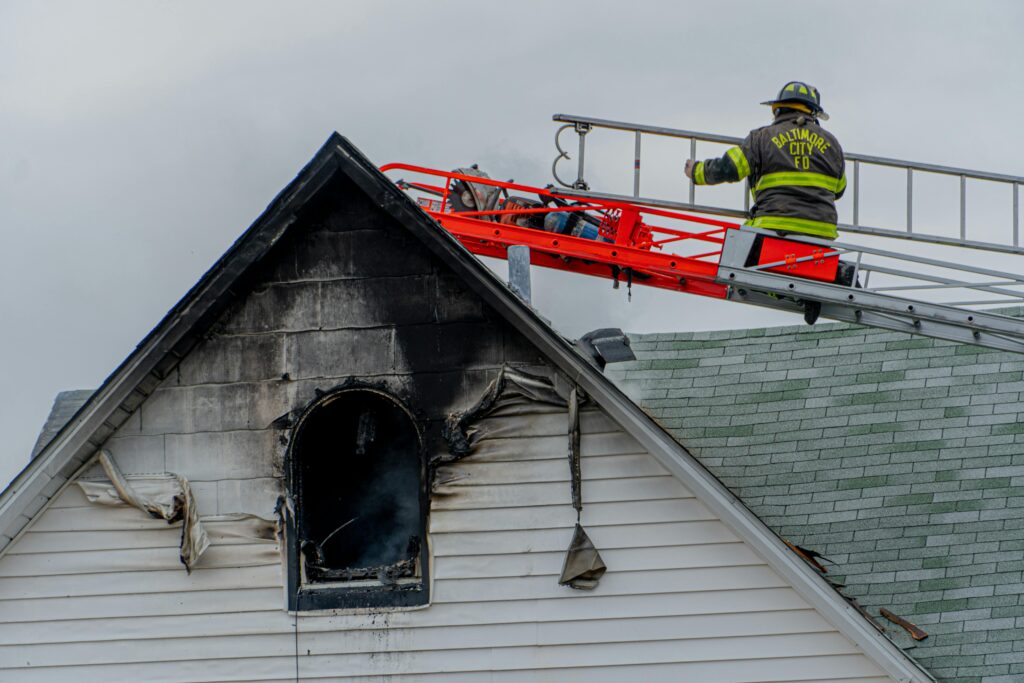“I thought I was ready,” recalls Sarah Martinez, a first-time homebuyer who ended up spending nearly $8,000 more than expected after skipping a home inspection and underestimating closing costs (National Association of Realtors [NAR], 2024). “I wish someone had told me where the hidden pitfalls were.”
Buying your first home is one of the most exciting milestones in life—but for many first-time homebuyers, it can also be an expensive learning experience full of costly mistakes. From choosing the wrong mortgage loan to overlooking crucial steps like inspections and program eligibility, small missteps can quickly add up to thousands in unexpected costs.
In this guide, we’ll break down the 10 most common (and costly) first-time homebuyer mistakes, explain why they matter, provide real-world examples, and give you clear, actionable steps to avoid them. By the end, you’ll be able to navigate the buying process with confidence, protect your budget, and avoid the regrets that catch so many new homeowners off-guard.
Table of Contents

1. Skipping Mortgage Pre-Approval
Why It Matters
Many first-time homebuyers start house hunting without knowing exactly how much they can borrow—or on what terms. Without a mortgage pre-approval, you’re essentially shopping blind, and risk falling in love with a home outside your budget. Worse, in competitive markets, sellers often won’t consider offers without proof you’re financially qualified (NAR, 2024).
Example
Imagine finding your dream home for $320,000—only to learn mid-negotiation that you can only qualify for a $280,000 loan. You’ve wasted time, potentially lost money on inspections, and damaged your bargaining position. It’s important to have your finances and budget figured out before you even start to shop around.
How to Avoid It
- Get pre-approved, not just pre-qualified—pre-approval means the lender has reviewed your credit, income, and assets.
- Shop multiple lenders for the best rate and terms before committing.
- Update your pre-approval if your financial situation changes before closing.
2. Draining Your Savings for the Down Payment
Why It Matters
It’s tempting to put every available dollar into your down payment to lower your monthly mortgage bill or avoid private mortgage insurance (PMI); However, emptying your savings account leaves you without a safety net for emergencies, unexpected home repairs, or even moving expenses. According to Freddie Mac (2024), more than 40% of buyers underestimate post-closing costs, leading to financial stress within the first year of ownership.
Example
You use every cent of your $20,000 savings for a 10% down payment—then, two weeks after moving in, your HVAC fails and costs $6,500 to replace. Without an emergency fund, first-time homebuyers like you can be left feeling like high-interest credit cards are your only option.
How to Avoid It
- Keep at least 3–6 months of living expenses in a separate emergency fund after closing.
- Factor in moving costs, utility deposits, and initial repairs when calculating how much you can put down.
- Explore low down payment programs (FHA, VA, USDA) or down payment assistance so you can buy without wiping out your reserves.
3. Ignoring Total Monthly Housing Costs
Why It Matters
Focusing only on the mortgage payment is one of the most common—and expensive—oversights for first-time homebuyers. True housing costs include property taxes, homeowners insurance, HOA fees, utilities, and maintenance. The rule to remember is that housing should take up no more than 28–31% of your gross monthly income (NAR, 2025), but ignoring the extras can push you far beyond that threshold, leading to what’s called “house poor” status.
Example
Your projected mortgage payment is $1,500/month, but after adding $350 in taxes, $100 in insurance, $200 in HOA dues, and $250 in utilities, you’re actually spending $2,400/month—nearly 40% of your income.
How to Avoid It
- Ask your lender for a full PITI estimate—Principal, Interest, Taxes, and Insurance—before making an offer.
- Factor in HOA dues, utilities, and an annual maintenance budget (about 1–3% of your home’s value).
- Use an affordability calculator that includes all housing expenses, not just the mortgage.

4. Skipping Mortgage Pre-Approval
Why It Matters
In competitive housing markets, not having a mortgage pre-approval letter can make your offer significantly less attractive to sellers. Pre-approval shows you’ve been vetted by a lender, your credit has been reviewed, and you’re financially prepared to move forward. Without it, you risk losing your dream home to another buyer who is ready to close faster.
Example
Imagine finding a home you love, but another buyer’s offer includes a pre-approval letter while yours doesn’t. Sellers often choose the offer with the least uncertainty—even if it’s not the highest bid (NAR, 2024).
How to Avoid It
- Get pre-approved before you shop—not just pre-qualified. Pre-qualification is a quick estimate; pre-approval involves a full credit check and verification of income and assets.
- Update your pre-approval every 60–90 days, as they typically expire after this period.
- Use your pre-approval amount as a ceiling, not a target—buying less than the max gives you more budget flexibility.
5. Overlooking First-Year Costs
Why It Matters
Many first-time buyers budget only for their down payment and monthly mortgage, forgetting the extra expenses that hit in the first year of homeownership. This oversight can lead to financial strain or even debt if you’re unprepared.
Example
A study by the National Association of Realtors found that first-time buyers often underestimate costs like home repairs, property taxes, and homeowners insurance, leading 20% to experience “financial shock” in their first year (NAR, 2024).
Common First-Year Expenses That Surprise Buyers
- Maintenance & Repairs: Even a new home can require fixes—budget 1–3% of your home’s value annually.
- Furnishings & Appliances: Moving from a smaller space often means buying new furniture or replacing outdated appliances.
- Utilities & Services: Water, trash, internet, HOA dues—often higher than expected.
- Seasonal Costs: Lawn care, snow removal, pest control.
How to Avoid It
- Create a post-closing budget that includes estimated monthly and annual costs beyond your mortgage.
- Set up a home emergency fund to cover surprise repairs or replacements.
- Ask the seller for a utility history so you can budget accurately before closing.
6. Ignoring Local Market Conditions
Why It Matters
Your dream home’s value—and your ability to buy it at the right price—can hinge on timing and market dynamics in your specific area. National housing trends may grab headlines, but local supply, demand, and seasonal shifts have a much greater impact on what you’ll actually pay.
Example
In a hot seller’s market, waiting just three months can mean paying 5–10% more for the same home. Conversely, in a slower buyer’s market, rushing to buy without negotiating could mean overpaying by thousands.
Common Oversights
- Relying on national averages instead of hyper-local data.
- Overlooking seasonal cycles (e.g., spring competition vs. winter deals).
- Ignoring upcoming developments like new schools, highways, or zoning changes that could affect property values.
How to Avoid It
- Study local housing reports from your county or city housing authority, not just national sites.
- Ask your real estate agent for a Comparative Market Analysis (CMA) to understand pricing trends in your neighborhood of interest.
- Time your offer strategically—off-season months can mean less competition and better deals.
- Factor in future growth—buying near planned transit lines or revitalization projects can boost equity over time.

7. Not Understanding Loan Terms
Why It Matters
A mortgage isn’t just about the interest rate—it’s a long-term financial contract with multiple moving parts. Misunderstanding the fine print can lock you into higher payments, costly penalties, or terms that don’t match your financial goals.
Example
A 30-year fixed-rate loan might feel “safe” as a first-time homebuyer, but if you plan to sell or refinance in 7 years, you could be overpaying in interest compared to an adjustable-rate mortgage (ARM) with a lower initial rate. On the flip side, choosing an ARM without understanding future adjustments could mean payment shock down the line.
Common Oversights
- Focusing only on the monthly payment instead of the total loan cost over time.
- Overlooking prepayment penalties that make refinancing costly.
- Not understanding how private mortgage insurance (PMI) impacts monthly costs.
- Misjudging the risks of adjustable interest rates or balloon payments.
How to Avoid It
- Read the Loan Estimate and Closing Disclosure carefully—and ask your lender to explain every line in plain language.
- Compare multiple loan types (FHA, VA, USDA, Conventional) to see which fits your timeline and budget best.
- Ask about total lifetime costs, not just upfront savings.
- Use amortization calculators to see how payments break down over time and how extra payments could shorten your loan term.
8. Overlooking Additional Ownership Costs
Why It Matters
The mortgage payment is only part of the cost of owning a home. Many first-time buyers get caught off guard when they realize property taxes, homeowners insurance, utilities, and maintenance can add hundreds—or even thousands—to their monthly expenses.
Example
A buyer budgeted for a $1,800 mortgage but didn’t account for the $350 monthly HOA fee, $200 in average utility costs, and a $4,000 annual property tax bill. Within months, their “affordable” home felt like a financial squeeze.
Common Oversights
- Property taxes that increase annually or with property reassessments.
- HOA fees and special assessments for repairs or improvements.
- Seasonal utilities like higher heating bills in winter or cooling in summer.
- Ongoing maintenance such as roof repairs, landscaping, pest control, and appliance replacements.
How to Avoid It
- Ask for a seller’s disclosure on annual utility costs and maintenance records.
- Research local property tax rates and check if recent sales have caused tax increases.
- Budget 1%–3% of the home’s value annually for repairs and upkeep.
- Get insurance quotes before you make an offer, especially if the home is in a flood, hurricane, or wildfire-prone area.
9. Failing to Budget for Closing Costs
Why It Matters
Many first-time homebuyers focus on saving for a down payment but forget that closing costs—lender fees, title charges, insurance, taxes, and more—can add 2%–5% of the purchase price to what they need at signing. On a $300,000 home, that’s $6,000–$15,000 on top of your down payment.
Example
A buyer saved 5% for their down payment but didn’t realize closing costs would be an additional $9,200. Without extra funds available, they had to take a higher-rate lender credit to cover the gap, costing them thousands over the life of the loan.
Common Oversights
- Underestimating lender origination, appraisal, and processing fees.
- Forgetting about prepaid property taxes and insurance in escrow.
- Ignoring transfer taxes or HOA transfer fees.
- Not budgeting for optional but recommended services, like home inspections or surveys.
How to Avoid It
- Request a Loan Estimate early in the process to see an itemized breakdown of expected closing costs.
- Ask your lender about credits for higher interest rates, but weigh the long-term cost.
- Negotiate with the seller to cover part of the costs, especially in a buyer’s market.
- Budget for the high end of the 2%–5% range to avoid surprises.

10. Skipping the Home Inspection
Why It Matters
A home inspection is your opportunity to uncover hidden problems before you commit. Skipping it might save $300–$600 now, but can lead to thousands in repair costs later. The American Society of Home Inspectors (ASHI) reports that inspections often reveal issues—such as roof leaks, faulty wiring, or foundation cracks—that aren’t visible during a showing.
Example
One first-time homebuyer waived the inspection to win a bidding war. Three months later, they discovered a failing septic system that cost $14,000 to replace—something a standard inspection could have flagged.
Common Oversights
- Waiving inspections to make an offer more competitive.
- Relying solely on the seller’s disclosure without independent verification.
- Not budgeting for specialty inspections (radon, mold, sewer line).
How to Avoid It
- Always hire a licensed inspector—even in hot markets.
- Attend the inspection to see problems firsthand and ask questions.
- Consider add-on specialty inspections for older homes, rural properties, or homes with known risk factors.
- Use findings as leverage—you may negotiate repairs or a price reduction before closing.
Final Thoughts
Buying your first home is exciting, but the road to closing is filled with potential pitfalls. From underestimating closing costs to skipping a professional inspection, each of these 10 mistakes can drain your budget, limit your options, or lock you into unfavorable terms for years. The good news? Every one of them is avoidable with preparation, research, and a willingness to ask questions at every step.
Key Takeaways from Each Section
- Not Getting Pre-Approved First – Pre-approval clarifies your budget and strengthens your offer.
- Ignoring Total Housing Costs – Look beyond the mortgage payment to include taxes, insurance, utilities, and maintenance.
- Overextending Your Budget – Avoid stretching your finances to the breaking point.
- Skipping First-Time Buyer Programs – You may be eligible for grants, lower rates, or reduced fees.
- Not Comparing Loan Options – The right loan type can save you thousands over the life of your mortgage.
- Forgetting to Factor Closing Costs – These can add 2%–5% of your purchase price.
- Not Researching the Neighborhood – Location impacts lifestyle, safety, and long-term value.
- Making Big Purchases Before Closing – Large financial moves can jeopardize loan approval.
- Failing to Budget for Immediate Repairs – Even move-in ready homes may need quick fixes.
- Skipping the Home Inspection – Inspections protect you from costly surprises.
Avoid Costly Mistakes
A successful first home purchase isn’t just about finding the right property—it’s about making informed decisions at each step of the process. By avoiding these common mistakes, you’ll position yourself to buy a home that fits both your lifestyle and your long-term financial goals.

References
American Society of Home Inspectors. (n.d.). About ASHI. https://www.homeinspector.org
Bankrate. (2024). How much are closing costs? Bankrate. https://www.bankrate.com/mortgages/closing-costs/
Consumer Financial Protection Bureau. (2024). Shopping for a mortgage. Consumer Financial Protection Bureau. https://www.consumerfinance.gov/owning-a-home/mortgage-shopping/
Federal Housing Administration. (2025). Buying your first home. U.S. Department of Housing and Urban Development. https://www.hud.gov/topics/buying_a_home
Fidelity Investments. (2024). How much house can you afford? Fidelity Investments. https://www.fidelity.com/viewpoints/personal-finance/how-much-house
Freddie Mac. (2024, October 18). U.S. Economic, Housing and Mortgage Market Outlook – October 2024. www.freddiemac.com/research/forecast/20241018-us-economy-remains-strong
Investopedia. (2025). First-time homebuyer tips. Investopedia. https://www.investopedia.com/first-time-homebuyer-tips-5186647
National Association of Realtors. (2025). 2025 home buyers and sellers generational trends report. National Association of Realtors. https://www.nar.realtor/research-and-statistics
National Foundation for Credit Counseling. (2024). First-time homebuyer guide. NFCC. https://www.nfcc.org/first-time-homebuyer-guide/
U.S. Department of Veterans Affairs. (2025). VA home loan program. VA.gov. https://www.va.gov/housing-assistance/home-loans/
